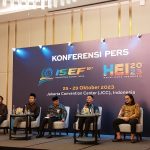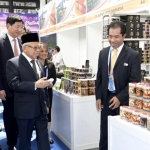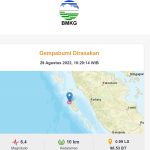Nuclear to identify cause of malnutrition

Jakarta (Indonesia Window) – Another use of nuclear technology for peace was demonstrated by the National Nuclear Energy Agency (BATAN) by applying the Nuclear Analysis Technique (TAN) to identify the content of micronutrients that are influential in child growth problems.
Data on Basic Health Research (Riskesdas) 2018 from Indonesia’s Ministry of Health showed that 17.7 percent of infants under the age of five in the country experienced nutritional problems, the BATAN website disclosed here, Friday, adding that the number consists of 3.9 percent of children under five suffering from malnutrition and 13.8 percent experiencing undernutrition.
“We see that among causes of malnutrition in addition to the economy are children’s eating patterns, parenting, environmental factors, sanitation, and parental education,” said Researcher of the Center for Applied Nuclear Science and Technology (PSTNT) Diah Dwiana Lestari.
According to her, TAN can be used to analyze micro utrient content that is difficult to detect using conventional methods.
The contents of micronutrients recommended by the World Health Organization (WHO) include iron (Fe), zinc (Zn), and selenium (Se), Diah explained.
“TAN sensitivity is high, detection limits are good, and will detect levels of elements that are very small to the order parts per billion,” she pointed out.
BATAN has been characterizing micronutrients as contained in various foodstuffs on the island of Java which represent the entire territory of Indonesia because of its dense population.
The BATAN team selected approximately 17 food commodities as analysis samples, ranging from chicken, meat, eggs, tempeh (fermented soybean), tofu, vegetables, to fruits.
The results of the analysis of micronutrient content in these foods complement the Indonesian food composition data.
“One of the results we got was a database of micronutrients Fe, Zn, and Se in the Indonesian Food Composition Book Table, where we are working with the Ministry of Health,” Diah said.
In addition to foods, she and her team are currently also examining the real food intake of 400 infants under the age of two in Indonesia’s province of East Nusa Tenggara.
“We are focusing on areas with the largest stunting, with a prevalence of more than 30 percent, in the sense that of the three infants at least one is stunted,” Diah disclosed.
Stunting is a chronic nutritional problem in toddlers characterized by shorter height compared to children of the same age.
Samples were taken in Kupang Regency and South Central Timor Regency.
The study was conducted by interviewing mothers about what intake was given to their children.
“We ask one by one the mothers about what foods and drinks they consume, starting from waking up to sleeping again. Next we take samples of food consumed by children and breast milk samples for analysis,” Diah said, adding that the analysis process is still ongoing.
Se hopes that this year the research will produce an analysis of Fe, Zinc and Se micronutrient content according to WHO recommendations.
The content of Fe and Zinc can still be detected by conventional methods, but if Se is difficult because the idea (its size) is very small. This is where TAN is applied, she added.
Reporting by Indonesia Window










